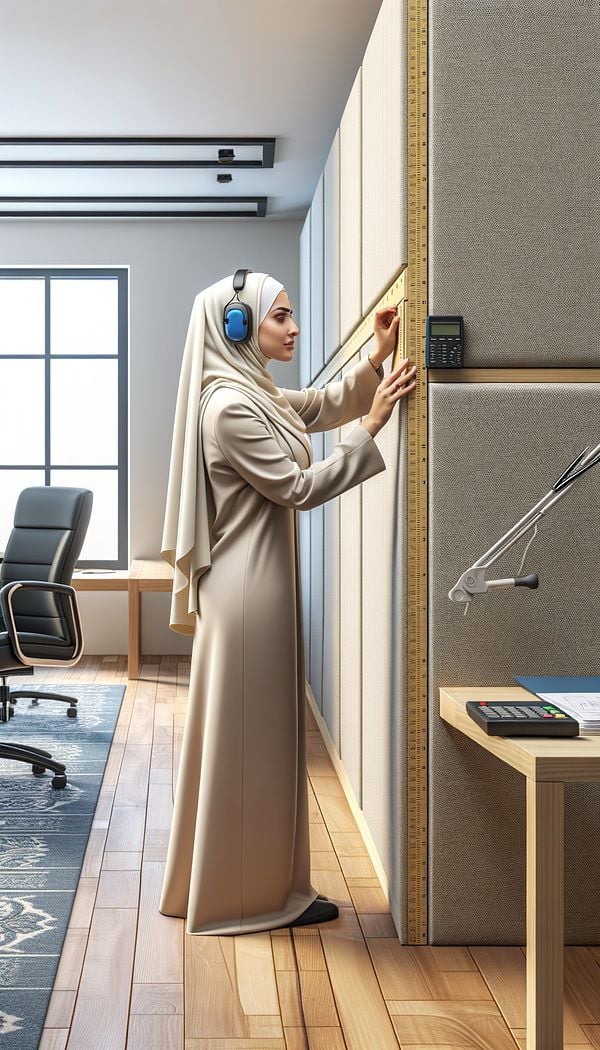What is Acoustics?
Acoustics is the branch of science that deals with the study of sound and how it is perceived in an environment.
Description
Acoustics, at its core, is all about sound — its generation, transmission, and effects within different environments. In the context of interior design, acoustics plays a crucial role in designing spaces that not only look appealing but also sound comfortable. The goal is to manage sound within an interior to minimize unwanted noise and enhance the quality of desired sounds.
There are several factors to consider when applying acoustics in interior design, such as the size and shape of the room, the materials used in furnishings and on surfaces, and the intended use of the space. For instance, hard surfaces like concrete or glass can reflect sound, leading to echoes and higher noise levels, whereas softer materials like carpet or acoustic panels can absorb sound, reducing noise. Understanding how sound interacts with various materials and design elements helps in creating spaces that are acoustically balanced.
Furthermore, acoustics can significantly influence how a space is perceived and experienced. In settings like offices, restaurants, or residential areas, poor acoustic design can lead to discomfort, stress, and decreased productivity. Conversely, spaces with well-designed acoustics can enhance communication, privacy, and overall well-being.
Finally, innovative technologies and materials are continuously being developed to improve the acoustic properties of interiors. These advancements offer exciting opportunities for designers to creatively integrate sound management into their projects, making for more functional, comfortable, and enjoyable spaces.
Usage
In an open-plan office, acoustics may be optimized through the strategic use of sound-absorbing materials and partitions to minimize noise distractions. In a conference room, the focus might be on enhancing speech clarity through the careful placement of sound-reflective surfaces. Restaurants often use a combination of absorbent materials and decorative elements to manage noise levels while creating an inviting ambiance.
FAQs
-
How do materials impact interior acoustics?
Materials play a crucial role in interior acoustics by determining how sound is absorbed, reflected, or transmitted. Hard, smooth surfaces tend to reflect sound, contributing to echoes and noise, while soft, porous materials can absorb sound, reducing noise levels.
-
What is soundproofing in the context of interior design?
Soundproofing refers to the methods and materials used to prevent sound from entering or leaving a particular space. It involves various techniques to reduce or block unwanted noise, enhancing the acoustic quality of an environment.
-
Can good acoustics improve productivity?
Yes, good acoustics can significantly enhance productivity. In environments like offices, minimizing background noise and optimizing sound levels can reduce stress and distractions, leading to improved focus and efficiency.
Practical Application
When designing or renovating a space, consider the acoustic implications of your choices. Use rugs, curtains, and soft furnishings to reduce noise in areas that require tranquility. For spaces intended for communication or public speaking, incorporate materials and design elements that enhance sound clarity. Additionally, consider the use of acoustic panels or special ceiling tiles in places where controlling sound quality is paramount.
-
Architectural Elements199 articles
-
Technical Terms38 articles
-
Space Planning & Layout134 articles
-
Materials & Textiles360 articles
-
Aniline-PlusAniline-Plus is a type of leather that has been lightly treated.
-
AcousticsAcoustics is the branch of science that deals with the study of sound and how it is perceived in an environment.
-
CrochetingCrocheting is a versatile textile art form involving the interlocking of loops of yarn, thread, or other materials using a crochet hook.
-
EbonizeA method of darkening wood to mimic the appearance of ebony.
-
IlluminanceIlluminance is the measure of how much light falls on a surface.
